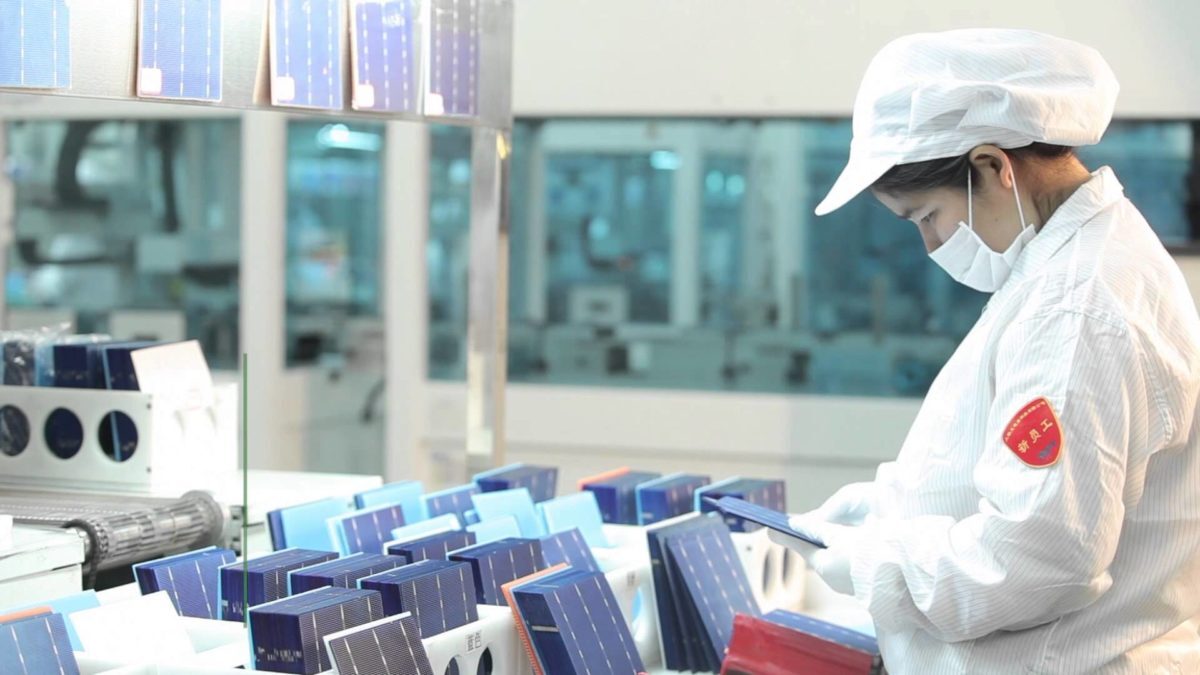An international team led by Helmholtz Institute Erlangen-Nürnberg for Renewable Energy (HI ERN), a branch of German research institute Forschungszentrum Jülich, has combined organic synthesis with predictive models to discover new functional materials in a closed-loop process. The so-called hybrid approach was applied to discovering material for hole transport layers in perovskite solar cells. It featured the use of a large molecular descriptor database based on experiments, machine learning (ML) and validation through further high-throughput experiments.
The team found that to be able to use machine learning and autonomous optimization algorithms requires not only a sufficiently large data volume but also data diversity. To address that challenge it began with a database of structural formulas of around one million virtual molecules that could be produced from commercially available substances.
Density functional theory (DFT) calculations and other computational tools were used and tailored to calculate a large set of possible hole transport materials (HTMs) for enhancing the performance of perovskite solar cells based on relevant structural features. “Then we synthesized about 100 initial materials and tested them in solar cells, which allowed us to train machine learning models to select two more batches of about 20 materials in order to maximize the solar cell device efficiency,” the research's corresponding author, Pascal Friederich, told pv magazine.
Molecules with differing characteristics were automatically produced at HI ERN with the help of a robotic system and used to manufacture otherwise identical solar cells, dopant-free HTMs in p-i-n structured perovskite solar cell devices. The results for the series of HTMs showed an initial power conversion efficiency exceeding 20% after Bayesian optimization, according to the paper. These materials reached an efficiency as high as 26.2% and a certified efficiency of 25.9%.
Furthermore, the devices maintained 80% of the initial performance for more than 1000 hours, which was attributed to the passivating properties of the new HTM, suppressing nonradiative recombination at the interface more effectively. “For model selection, we trained different ML models on a random 10-fold cross-validation of the 101 experimental molecular data points. Tested ML models included random forest regression, linear regression, neural networks, GP regression, and kernel-ridge regression. All simple models performed equally well,” noted the team.
“We were able to use the high throughput (HT) synthesis we developed for the wide range of molecules, and couple experimental and theoretical data to discover new hole-transport materials using Bayesian optimization. This is a promising research direction that uses machine learning to learn and understand, rather than just accelerating discovery,” Anastasia Barabash, research team member, told pv magazine, stressing that the trained ML models can be used to learn more about the underlying relationship between microscopic molecular properties and macroscopic device performance.
Research first author, Jianchang Wu, told pv magazine that one of the challenges of the study was to purifiy hundreds of molecules consistently, maintaining reproducibility from batch to batch, as well as keeping uniform conditions of the “many environmental, crystallization, and process factors that can “substantially” affect the outcome. Such models can be further explored as autonomous workflows “to identify and predict further novel molecules” tailored for a variety of applications, noted the group, adding that it could also be used to predict perovskite device performance of new molecular designs using design rules extracted and “elucidated from a fully trained model.”
Looking ahead, the group said it will integrate material discovery and device optimization into a seamless, closed-loop process. “Achieving this will require a concerted effort in interdisciplinary research, combining insights from materials science, engineering, and advanced computational techniques to create a synergistic workflow,” it said.
The research work is described in the paper “Inverse design workflow discovers hole-transport materials tailored for perovskite solar cells,” recently published in Science.
The scientists participating in the study were from Helmholtz Institute Erlangen-Nürnberg for Renewable Energy (HI ERN), a branch of Forschungszentrum Jülich, Karlsruher Instituts für Technologie (KIT), Friedrich Alexander University Erlangen Nürnberg (FAU), Ulsan National Institute of Science in South Korea, in China, University of Groningen, in Netherlands, as well Xiamen University and the University of Electronic Science and Technology, both based in China.
This content is protected by copyright and may not be reused. If you want to cooperate with us and would like to reuse some of our content, please contact: editors@pv-magazine.com.



By submitting this form you agree to pv magazine using your data for the purposes of publishing your comment.
Your personal data will only be disclosed or otherwise transmitted to third parties for the purposes of spam filtering or if this is necessary for technical maintenance of the website. Any other transfer to third parties will not take place unless this is justified on the basis of applicable data protection regulations or if pv magazine is legally obliged to do so.
You may revoke this consent at any time with effect for the future, in which case your personal data will be deleted immediately. Otherwise, your data will be deleted if pv magazine has processed your request or the purpose of data storage is fulfilled.
Further information on data privacy can be found in our Data Protection Policy.